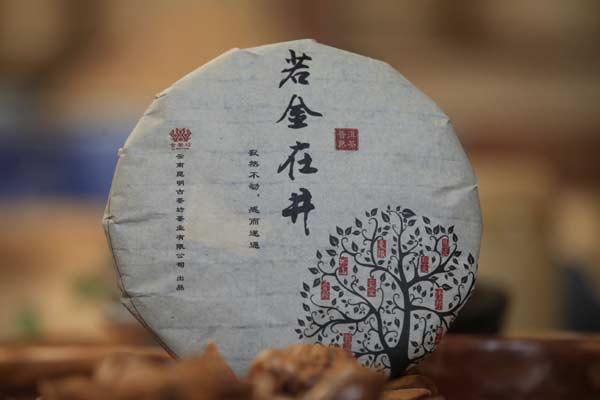 |
|
A pu'er cake produced by a Kunming tea company. [Photo by Zhang Jing / For China Daily]
|
Pu'er is no new name for tea lovers. Some promoters call the aromatic beverage a wonder tonic that reduces cholesterol and lowers blood pressure. Some see it as the "soft gold". And some compare it to Western wine-the older the better.
The excitement for pu'er tea from Yunnan from 1999 to 2007 drove the prices up tenfold, to a tipping point of 17,000 yuan a kg for the finest aged pu'er, before collapsing far below its pre-boom levels.
But right after the boom and its aftermath, the urban sipping class narrowed its attention to the wild pu'er tea from trees at least 300 years old.
"The tea from the ancient trees has a mellow aftertaste. Rare and nutrient-rich, it is difficult to obtain from the tall, gnarled trees in the mountains," says Dong Zi, president of Kunming Gu Cha Fang Tea Industry Co. "And it's completely pesticide-free."
"People say you can get drunk from drinking (industrial) tea, but insiders know that you are actually 'drunk' from consuming too much pesticide residue," says Tong Xiaofeng, who has sold wild tea from Yunnan for almost five years in Beijing. "That's why some customers began to seek something natural."
There are three major wild-tea production areas in Yunnan: Xishuangbannan, Pu'er and Lincang. The famous brands' average prices per kg range from Iceland's 20,000 yuan, and Banzhang's 8,000 yuan to Jingmai's 1,500 yuan.
"Unlike green tea, pu'er tea has no shelf life. That's why some nouveaux riches try to save the tea and corner the market," says Dong, noting that the price of wild tea has almost overtaken that of the 2007 bubble.
Some professionals, meanwhile, urge the crowd not to blindly follow the trend.
"Ancient tea trees need to be protected instead of exploited," says Yang Chongren, a researcher at Kunming Institute of Botany under the Chinese Academy of Sciences.
"Some of them are on the verge of extinction. We should make relevant protection laws and regulations before it's too late."
Yu Xiang, president of Kunming Junxianghao Tea Co, warns that more than 98 percent of "Iceland tea" in circulation is fake: "The village only produces 8 tons of tea every year but there are more than 300 tons in the market."
Tong Xiaofeng also admits it's hard to clarify the standards of real wild tea, although he takes a sip almost every day.
"It's all in the taste," he says. "But just like a jeweler, you really have to be experienced to spot the true treasure."
We Recommend:
